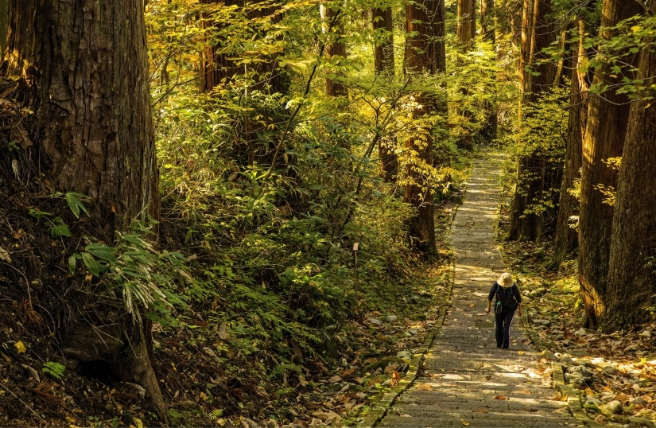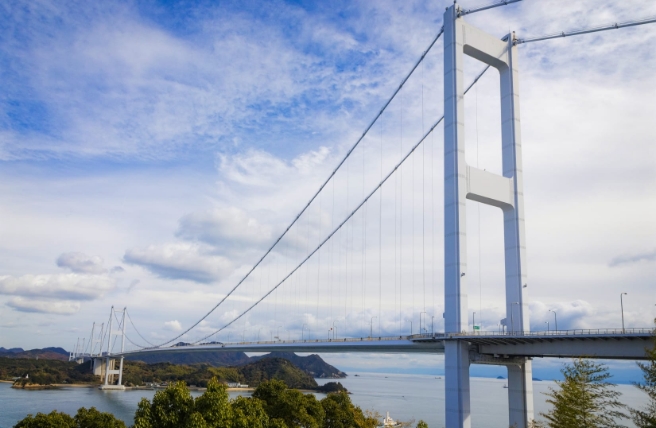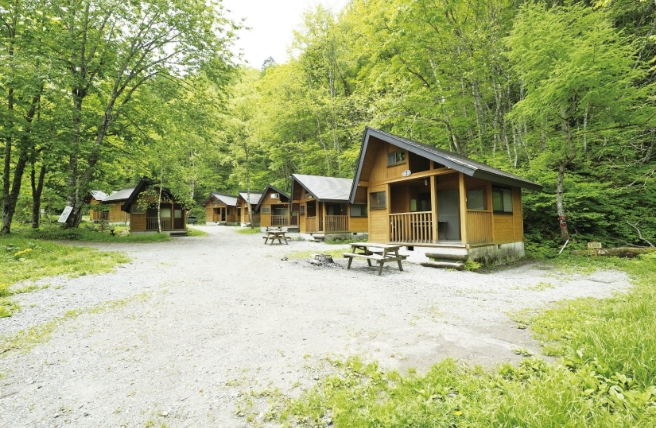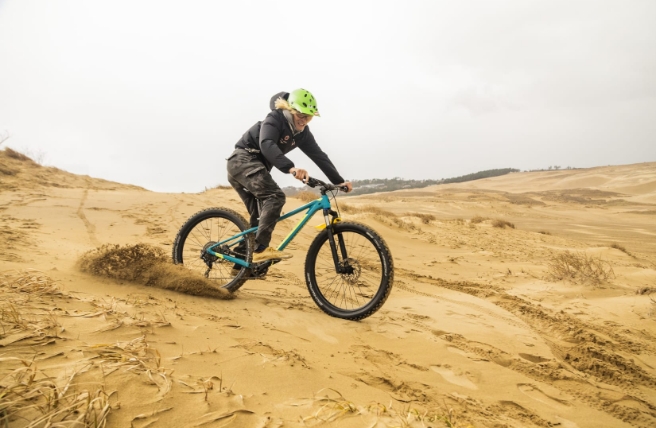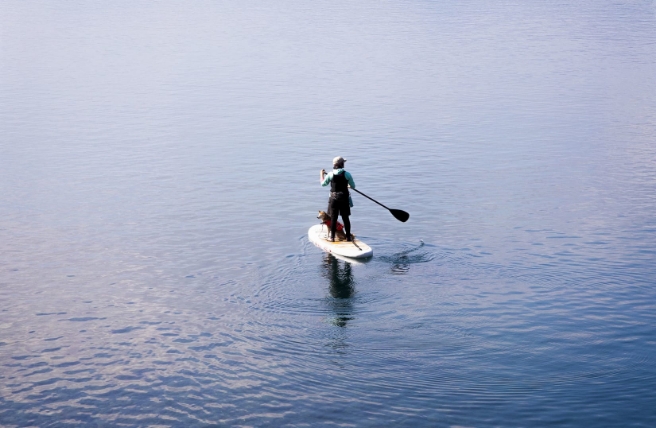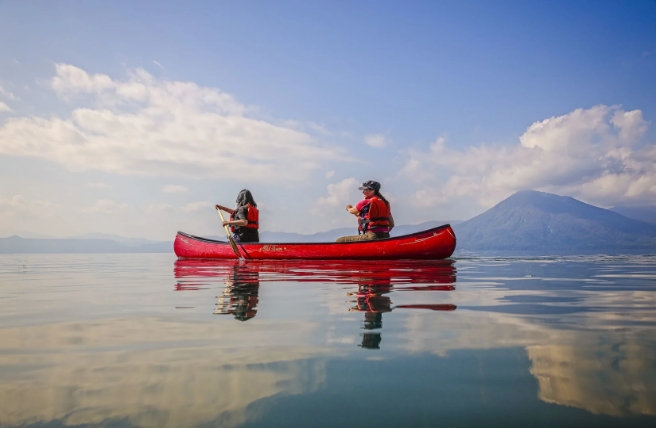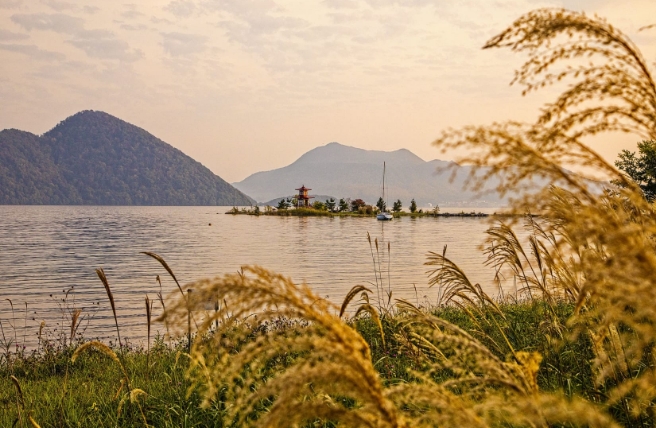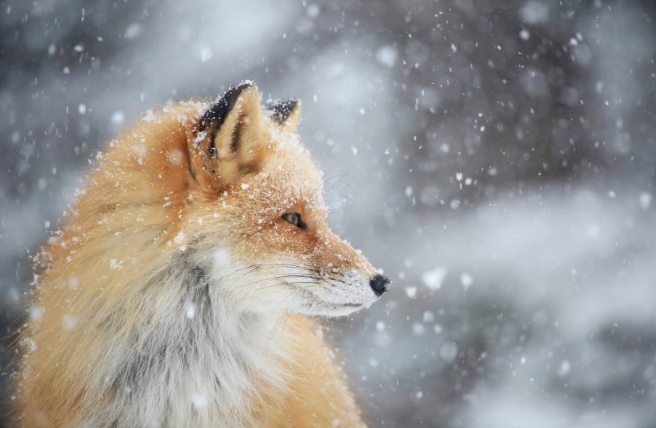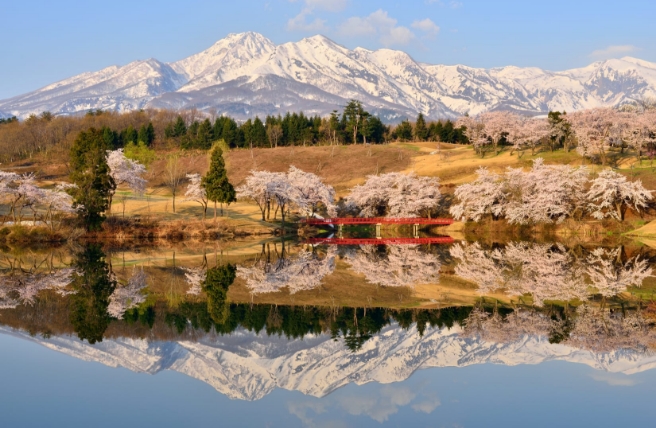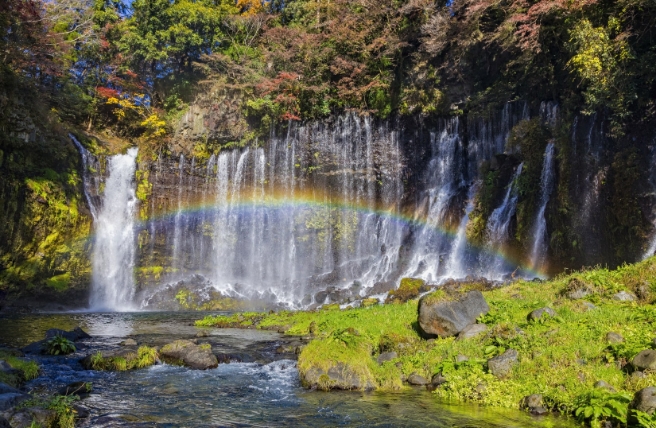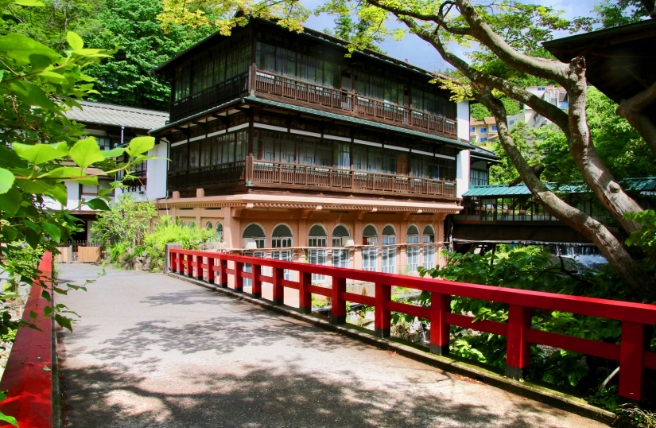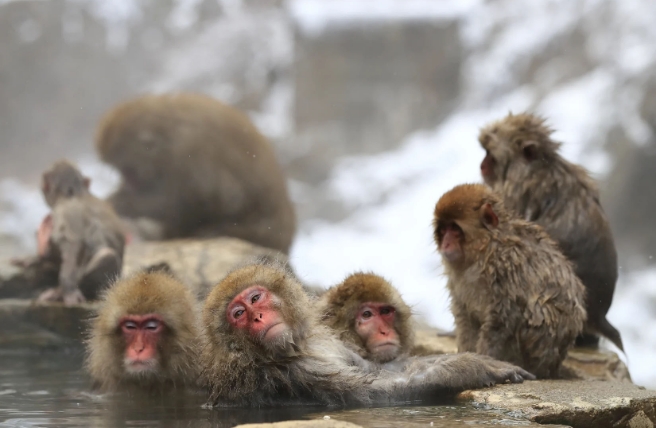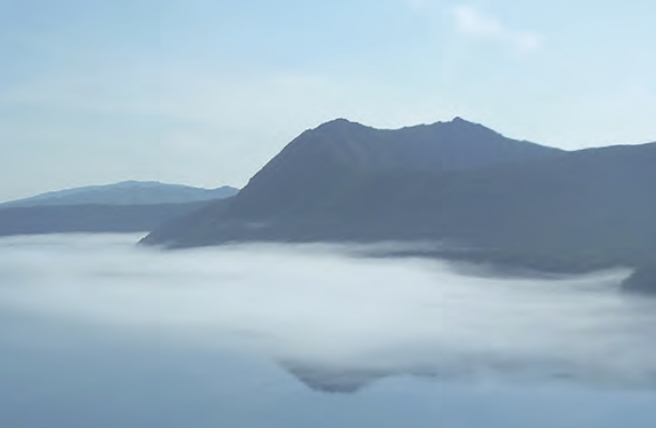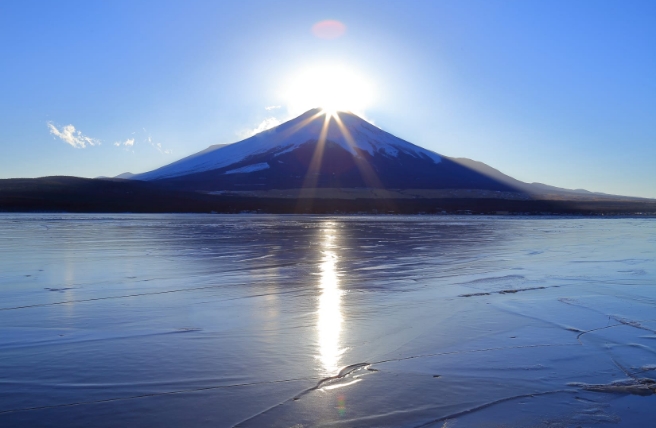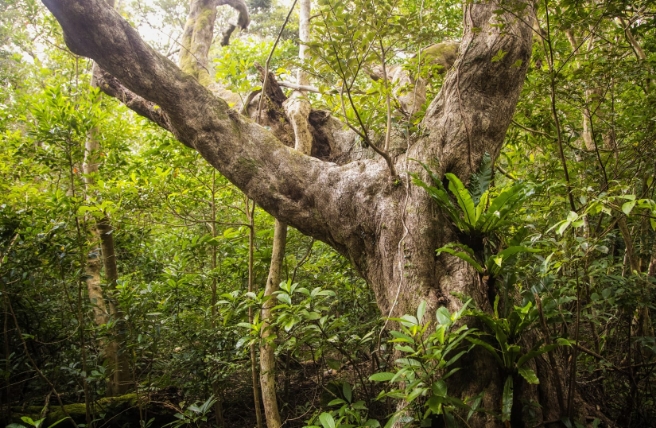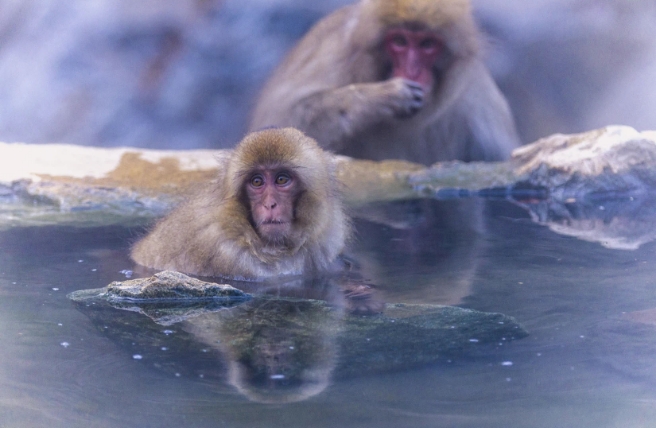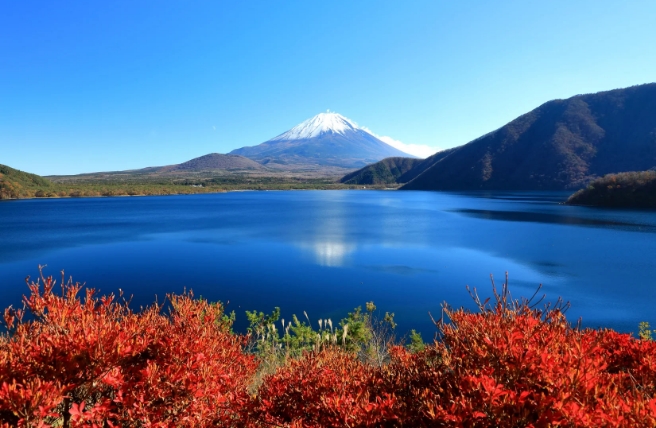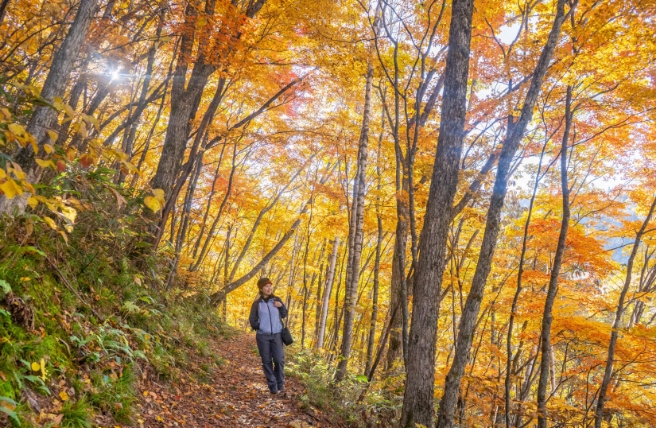Despite its image as the ultimate megalopolis, Tokyo is home to several national parks with some of the most spectacular landscapes.
If you’re looking for a change of pace, it’s surprisingly easy to get out of Tokyo and into the countryside. And where better to go than one of Tokyo’s three national parks? With its rivers, streams and mountains, the Mitake area in Chichibu-Tama-Kai National Park just to the west of the city offers fun activities including hiking, rafting and fishing. Meanwhile, the Izu Islands, part of Fuji-Hakone-Izu National Park, are surely one of Metropolitan Tokyo’s more unlikely components. Stargazing and trekking through volcanic landscapes are just some of the activities you can enjoy there.
Chichibu-Tama-Kai National Park
Chichibu-Tama-Kai National Park is a sprawling national park that is home to the Okuchichibu mountain range which includes well-known peaks such as Mt. Kimpu (2,599 m), Mt. Kobushigatake (2,475 m) and Mt. Kumotori (2,017 m). Several major rivers which flow through Tokyo and out to the sea have their headwaters in the park. The Mitake area combines a major mountain—the 929-meter-high Mt. Mitake—and a major river in the form of the Tama River that rushes through the Mitake Gorge.

The Mitake area
Mt. Mitake, a Sacred Mountain
The train from Shinjuku to Mitake only takes around 80 minutes. The Mitake Gorge runs parallel to the trainline and can be reached in just a few minutes’ walk from the station. Getting to the Mt. Mitake cable-car station/trailhead takes a little longer, as it requires a 10-minute bus ride or 30-minute walk.
Mt. Mitake is believed to have been a center of mountain worship for almost two millennia. One early indication of the mountain’s sacred status can be seen in the hundreds of giant cedars that line the path that meanders up from the lower cable-car station to the village near the mountain’s summit. These awe-inspiring trees are believed to guarantee safe childbirth. Takigyo, the discipline of purifying the soul by standing beneath a freezing waterfall, is still practiced on the mountain.

The mountain forest is home to nocturnal flying squirrels, dozens of bird species, eight species of snake, not to mention Japanese serows, black bears and tanuki racoon dogs. The many species of woodland flower include pink shortia uniflora (Nippon bells) in spring and white renge shoma (false anemones) in summer.
If you are not feeling energetic enough for the climb up the cedar-lined path to just outside the village near the top of Mt. Mitake, jump on the cable car. It will whisk you from Takimoto Station (408 meters) to Mitakesan Station (831 meters) in just 6 minutes. (Walking takes up to 60 minutes, or about 10 times as long!)

From Mitakesan Station, it’s a 1-km walk to Musashi Mitake Shrine. The “Musashi” part of the name comes from Musashi Province, the name of the Tokyo region in the days of the shogunate when Japan was ruled by hereditary military rulers. And indeed, the shrine had direct links with the shogun. The hall of worship, the largest building in the complex, was supposedly rebuilt in 1606 on the orders of Shogun Tokugawa Ieyasu to face eastward to protect the western side of Edo (modern-day Tokyo) from evil.

Hiking Mt. Mitake
Mt. Mitake offers a variety of hiking options. The route to Okutama Station via Mt. Odake and Mt. Nokogiri is one of the toughest and takes about 5 or 6 hours to walk. (Since “nokogiri” means “saw” in Japanese, you can expect plenty of ups and downs!)
Easier hikes include going to the summit of Mt. Hinode and back (2 hours) and the Rock Garden loop (2.5 hours) along the Yozawa River. Waterfalls, moss-covered boulders, steppingstones and soaring trees make for a classic and mysterious Japanese mountain landscape—while the cool temperatures make for a pleasant walk even in the hot summer months.

Having fun on the Tama River
Of course, not everyone who goes to the Mitake area has to go up the mountain. The riverside of the Mitake Gorge offers an easy flat walk enlivened by the opportunity to watch the kayakers, rafters and boulderers going about their business.
The banks of the Tama River have long been a popular place for summer barbecues. At the Okutama Fishing Center, you can go one step better and “eat what you catch.” The river has been broken into a series of ponds making it easier to catch the rainbow trout which you can then barbecue.

Rafting is recommended for people who prefer their activities a little more fast-paced. One of the tours adds a novel sustainability twist by combining white water rafting with a river clean-up. The globally ranked rafting guide leads groups through the different currents while picking up trash from the river and its banks at the same time. This half-day tour is a great way to have fun while doing good.
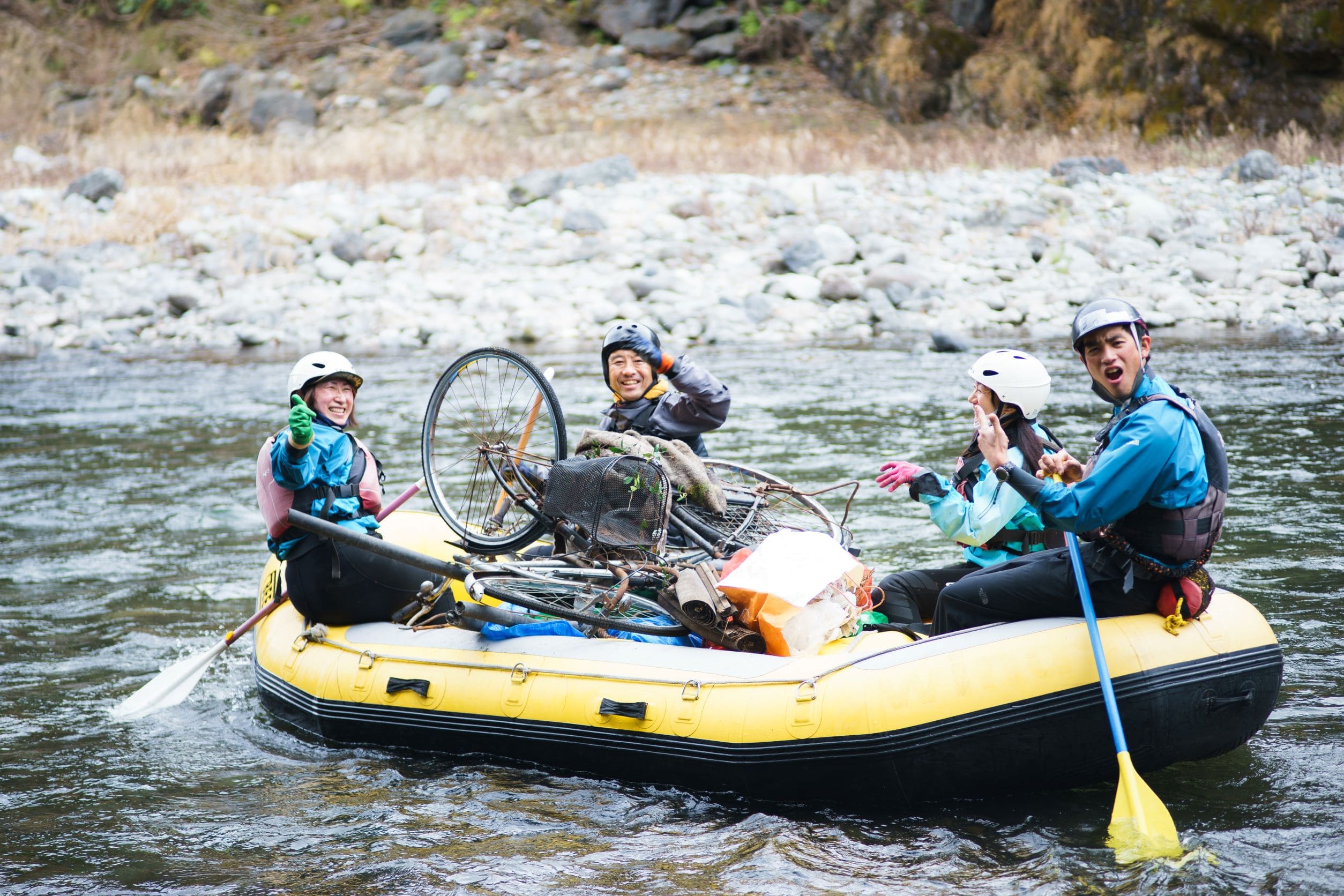
Obviously, smaller and lighter craft offer are more maneuverable than your typical multi-person whitewater raft, so the inflatable kayaks known as duckies that seat only two people or even smaller packrafts that seat only one make negotiating the rapids that much more exciting. A half-day experience using these smaller craft is available for adrenaline junkies.

Enjoying Mitake safely
- When hiking, always check access and the weather in advance.
- Check the difficulty level and the time required for the route in advance, so you can be sure to be safely off the mountain before nightfall. Also make sure you have the right equipment and adequate food and drink.
Fuji-Hakone-Izu National Park
The second of the two national parks we are looking at here is Fuji-Hakone-Izu National Park. Located to the southwest of Tokyo, it consists of four distinct areas: Mount Fuji and Hakone in the north, and the Izu Peninsula and Izu Islands in the south. What all four areas have in common is the most spectacular volcanic landscapes.
We are going to focus on three out of the eight Izu Islands: Izu Oshima (usually just Oshima), the biggest island in the chain (110 km from Tokyo); Hachijojima, the second biggest, which is known for the Fuji-like volcano that rise out of its center (290 km from Tokyo); and finally Kozushima, a much smaller island famous for its beautiful night skies (180 km from Tokyo).

Exploring the Desert in Oshima
Almost in the middle of Oshima sits Mt. Mihara (758 m), an active volcano which most recently erupted in 1986. If you’re interested in unique volcanic landscapes, you can hire an expert guide and hike across the black sand of the Ura Sabaku Desert, a barren expanse of black volcanic ash and scoria (basaltic lava fragments) on the northeast side of the mountain.
Getting to Oshima from Tokyo takes 25 minutes by plane, 2 hours by jetfoil or 8 hours by ferry.
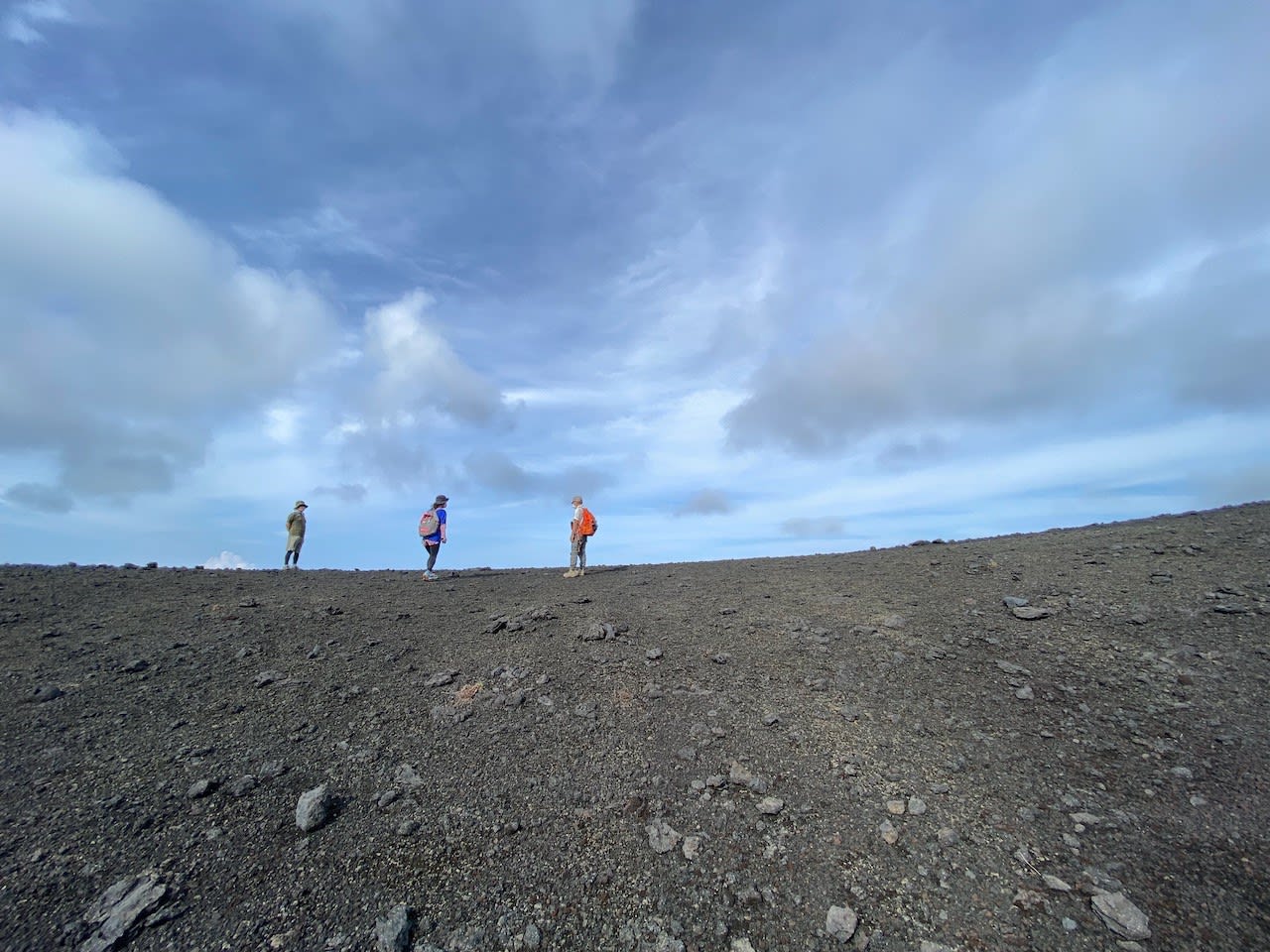
Climbing Mt. Fuji’s “Mini Me” in Hachijojima
Hachiojima is another great place for trekking. The symbol of the island is Mt. Hachijo-Fuji, so named because of its resemblance to Mt. Fuji. At 854 meters, Hachijo-Fuji is the highest peak in the Izu Islands.
It is a climb of 1,280 steps to get to the summit. Unlike its namesake, Hachijo-Fuji is verdant all the way to the summit. There is a cattle ranch, an unfamiliar site in Japan, at the seventh station. The view from the top of Hachijo-Fuji is spectacular because it overlooks not just the ocean, but another 700m-tall volcano in the southeast of the island. (Neither volcano has erupted since the early seventeenth century, though some seismic activity was detected in 2002.)
Getting to Hachiojima from Tokyo takes 55 minutes by plane and 10 hours 20 minutes by ferry.

Stargazing on Kozushima
Officially designated as an “International Dark Sky Park” in December 2020, in recognition of its efforts to protect the nocturnal environment, Kozushima markets itself as “Tokyo’s planetarium.” Most of Kozushima’s roughly 1,800 inhabitants live on the western side of the island around the harbor. The concentration of population in one place made tackling light pollution relatively easy, and the island’s 500-plus streetlights have all been replaced with lamps that minimize light leakage.
There are six stargazing spots on the island. You can make your way to them yourself, or alternatively you can book a tour with a trained local guide who will point out the different stars and constellations. (Tours are conducted in Japanese only, and should be booked three days in advance with a minimum of three participants per tour.)
Getting to Kozushima from Tokyo takes 45 minutes by plane, just under 4 hours by jet foil or 12 hours by ferry.

A Walk on Tokyo’s Wild Side
Mountains, rivers, volcanoes or deserts—Tokyo’s wild side is awe-inspiring, yes, but it’s also surprisingly easy to access. Now that you’ve been introduced to some of the highlights, why not get out there and explore for yourself?
Doing your part to protect the Izu Islands
- Do not go into designated off-limits areas or swim in areas other than those designated.
- Be aware that there is no cellphone reception in some parts of the islands.
- While the islands are popular sightseeing destinations, people also live there. Be considerate and stay out of gardens, fields, and other private property.
- Only camp in designated camping areas. Because accommodation is limited, some islands may refuse visitors without reservations. Be sure to make reservations in advance.
